This article was medically reviewed by Luba Lee, FNP-BC, MS. Luba Lee, FNP-BC is a Board-Certified Family Nurse Practitioner (FNP) and educator in Tennessee with over a decade of clinical experience. Luba has certifications in Pediatric Advanced Life Support (PALS), Emergency Medicine, Advanced Cardiac Life Support (ACLS), Team Building, and Critical Care Nursing. She received her Master of Science in Nursing (MSN) from the University of Tennessee in 2006.
There are 14 references cited in this article, which can be found at the bottom of the page.
This article has been viewed 104,833 times.
Spiders are everywhere, but thankfully, spider bites are rare, partially because many spiders aren't a threat to humans. However, some venomous spiders are harmful to humans, and it can be scary if your child is bitten by one! If you think or know your child has been bitten by a venomous spider, treat it quickly by taking your child to the emergency room to prevent the bite from becoming more serious. As long as you check for the bite, get your child into the ER, and follow up with treatment at home, your child should be fine.
Steps
Analyzing the Situation
-
1Look for signs of a brown recluse bite, including swelling and redness. With this type of spider bite, you should be able to locate the area where your child was bitten by redness around the bite. They may also have a rash in other areas of the body, as well as fever, fatigue, or joint stiffness.[1]
- Other conditions can mimic spider bites. For instance, a staph infection can look like a brown recluse bite.
-
2Watch for the symptoms of a black widow spider bite, including vomiting. With a black widow spider bite, you may not even be able to see the bite marks because the spider is so small. However, you should see a red, swollen area that is painful to your child. Other symptoms will include things like muscle cramps within 8 hours of the bite, belly pain, and trouble breathing.[2]
- A black widow spider bite can seem like a stomach illness since it causes stomach problems and fever. However, you should be able to see the red area developing somewhere on their body.
Advertisement -
3Pay attention to signs of an allergic reaction. These can include the child having trouble breathing or having tightness in their chest. They may also not be able to speak easily or swallow. An allergic reaction can cause swelling in the face and around the mouth.[3]
- An allergic reaction like this one always warrants a trip to the emergency room.
-
4Clean the area using warm soap and water. Opt for an antibacterial soap if you have it, but if you don't, any hand soap is fine. Wash your hands with soap and water first before cleaning the child's spider bite. Get the area wet and gently rub soap into it. Rinse it off thoroughly when you're done.[4]
- You can wear latex or nitrile gloves if you prefer.
-
5Apply a pea-sized amount of antibiotic ointment if you have it. Use a cotton swab to rub the antibiotic ointment gently into the area. You can cover it with a bit of gauze as needed to help keep it clean.[5]
- Spiders can carry bacteria as well as venom. Applying antibiotic ointment can help prevent infection, though it won't do anything about the spider's venom.
-
6Help keep the child calm by assuring them it will be okay. A spider bite is a scary thing, even for an adult. Encourage the child to take deep breaths and let them know they will be fine. Tell them you will take care of them or take them to see a doctor who will help.
- You could say, "I know this is scary, but let's just try to take a few deep breaths. Breathe in.... and out.... and in... and out. I'm going to take care of you, and we're going to see a doctor who will help. You're going to be okay."
-
7Encourage the child to lift the bite above their heart. This works best if the bite was on a leg or arm. It discourages swelling around the bite, as the blood is flowing away from it. Your child may need to be laying down to lift their limb up. You can help by propping it up with a pillow.
- Plus, it can help keep your child focused on a task, which will calm them.
-
8Identify or capture the spider if you see one on the child. In the United States, only 2 spiders cause problems, the brown recluse and the black widow. The brown recluse spider is about 1 inch (2.5 cm) in diameter with long, skinny lets. It has a violin shape on its head. The black widow is smaller with shorter legs, and it will have a red mark on its abdomen or back.[6]
- If you see the spider, try to take a picture of it or even capture it in a small container. To capture it, place the container over it upside down, then slide a paper underneath the top so you can flip it over. Avoid trying to touch the spider with your hands.
-
9Use an ice pack wrapped in a towel to relieve pain and swelling. Spider bites can cause redness, swelling, and pain. Put ice in a bag and place a towel between the bag and the skin. The cold will help relieve some of the pain while you seek care.[7]
- You can also use a cold, wet washcloth or a cold freezer pack with a cloth.
- Never put ice directly on the skin as it can cause damage.
Getting Medical Care
-
1Take your child to the emergency room if you suspect a spider bite. If you see the spider on your child or you think your child may have been bitten, it's better to be safe than sorry. Both brown recluse spider and black widow spider bites can be serious.[8]
- If you captured the spider, bring it with you in a sealed jar. If you took a picture but couldn't capture the spider, bring the picture instead.
- After your initial visit, you may need to return to the emergency room if your child develops a sudden rash after a bite. This can be a sign of an allergic reaction.[9]
- You may also need to make a return trip to the ER if the bite looks infected or the child has pain or cramping. Signs of infection include redness, swelling, and pus. The area may be warm to the touch or you may see red streaking out from the bite. The child may experience pain at the bite, pain in nearby joints, muscle cramps, or stomach cramps.[10]
-
2Expect a tetanus booster if your child hasn't had one in 5 years. While most children are up-to-date on tetanus shots, your doctor may recommend one if it's been a while. Spider bites can introduce bacteria to your child's bloodstream, including the bacteria that causes tetanus.[11]
- To help calm your child about getting a shot, let them know it will only hurt for a moment. You could say, "Okay, you're going to feel a little prick, but it will be over in just a second. Can you look at me and focus on breathing in and out?"
-
3Discuss corticosteroids for some bites. Doctors may prescribe these medications, particularly for brown recluse bites. It can help the swelling go down and decrease the body's reaction to the bite.
- The doctor may give your child a shot or prescribe a medication to take home with you. Sometimes, this comes in a cream form instead of a shot or pill. To apply it, gently rub a pea-sized amount into the area as often as directed.[12]
-
4Ask about muscle relaxants for a black widow bite. Because these bites can cause severe muscle cramps, muscle relaxants can help provide some relief. The doctor will likely give your child some at the ER and write you a prescription to take with you.
-
5Understand surgery and/or hospitalization may be necessary for some bites. If your child has a particularly bad reaction, they may need to have surgery on the area to remove dead or damaged tissue in the area. Alternatively, they may need to be hospitalized to help control the symptoms caused by the bite, particularly if they have a bad allergic reaction.
- In some cases, your child may need to be treated with antivenom, which may require a short hospital stint.
Caring for the Bite at Home
-
1Continue to apply cold compresses to the area every 20 minutes. Leave the compress on for 20 minutes, then take it off for 20 minutes. The coolness will help with the pain, swelling, and redness. You can apply compresses as long as your child has pain.[13]
- Never leave cold compresses on for extended periods, as they can damage your child's skin.
-
2Follow the prescribed medication regimen at home. Your doctor may give your child medication to take at home, which can include steroids, muscle relaxants as needed, and/or antibiotics. These may be pills, oral liquids, or creams. Make sure to follow your doctor's directions carefully to help provide care for your child.[14]
-
3Give your child a dose of acetaminophen or ibuprofen for pain. If your child is having pain at the site, muscle cramps, or other types of pain, over-the-counter children's acetaminophen (Tylenol) may help.[15] Your doctor can advise you how much to give your child based on weight and age. Typically, you can give 10-15 mg per 1 kilogram (2.2 lb) of weight every 4-6 hours.
- Acetaminophen is known as paracetamol in the U.K. and other parts of the world.
- Ibuprofen can also help but avoid giving your child aspirin, as it can cause a rare condition known as Reye's syndrome.
-
4Use an over-the-counter antihistamine for itchiness. After washing your hands, apply a pea-sized amount of antihistamine cream to the area. Gently rub it into the spider bite and surrounding area.[16]
- Alternatively, give the child the children's version of diphenhydramine (Benadryl). Talk to your doctor about an appropriate dose.
Expert Q&A
Did you know you can get expert answers for this article?
Unlock expert answers by supporting wikiHow
-
QuestionMy daughter has a spider bite that's red and has a blister. What should I do?
 Luba Lee, FNP-BC, MSLuba Lee, FNP-BC is a Board-Certified Family Nurse Practitioner (FNP) and educator in Tennessee with over a decade of clinical experience. Luba has certifications in Pediatric Advanced Life Support (PALS), Emergency Medicine, Advanced Cardiac Life Support (ACLS), Team Building, and Critical Care Nursing. She received her Master of Science in Nursing (MSN) from the University of Tennessee in 2006.
Luba Lee, FNP-BC, MSLuba Lee, FNP-BC is a Board-Certified Family Nurse Practitioner (FNP) and educator in Tennessee with over a decade of clinical experience. Luba has certifications in Pediatric Advanced Life Support (PALS), Emergency Medicine, Advanced Cardiac Life Support (ACLS), Team Building, and Critical Care Nursing. She received her Master of Science in Nursing (MSN) from the University of Tennessee in 2006.
Board-Certified Family Nurse Practitioner Generally, treatment for spider bites involves wound care, pain management, and tetanus prophylaxis, if necessary. Most bites heal without scarring without much treatment. Your treatment provider may recommend an antibiotic. Keep the bite clean by washing it with soap and water. Then, apply a cold compress to the bite for 10 minutes every 1-2 hours over a 12-hr period. Don't apply the compress longer than 10 minutes because it might damage the skin. Additionally, elevate the area to help the bite heal and give your daughter an over-the-count pain reliever like ibuprofen if her doctor says it's safe for her to take it.
Generally, treatment for spider bites involves wound care, pain management, and tetanus prophylaxis, if necessary. Most bites heal without scarring without much treatment. Your treatment provider may recommend an antibiotic. Keep the bite clean by washing it with soap and water. Then, apply a cold compress to the bite for 10 minutes every 1-2 hours over a 12-hr period. Don't apply the compress longer than 10 minutes because it might damage the skin. Additionally, elevate the area to help the bite heal and give your daughter an over-the-count pain reliever like ibuprofen if her doctor says it's safe for her to take it. -
QuestionI have bumps all over my arm, my stomach, and my legs. How can I tell if they are spider bites?
 Luba Lee, FNP-BC, MSLuba Lee, FNP-BC is a Board-Certified Family Nurse Practitioner (FNP) and educator in Tennessee with over a decade of clinical experience. Luba has certifications in Pediatric Advanced Life Support (PALS), Emergency Medicine, Advanced Cardiac Life Support (ACLS), Team Building, and Critical Care Nursing. She received her Master of Science in Nursing (MSN) from the University of Tennessee in 2006.
Luba Lee, FNP-BC, MSLuba Lee, FNP-BC is a Board-Certified Family Nurse Practitioner (FNP) and educator in Tennessee with over a decade of clinical experience. Luba has certifications in Pediatric Advanced Life Support (PALS), Emergency Medicine, Advanced Cardiac Life Support (ACLS), Team Building, and Critical Care Nursing. She received her Master of Science in Nursing (MSN) from the University of Tennessee in 2006.
Board-Certified Family Nurse Practitioner
References
- ↑ https://www.stanfordchildrens.org/en/topic/default?id=brown-recluse-and-black-widow-spider-bites-in-children-90-P02850
- ↑ https://www.stanfordchildrens.org/en/topic/default?id=brown-recluse-and-black-widow-spider-bites-in-children-90-P02850
- ↑ https://kidshealth.org/en/parents/spider-bites-sheet.html
- ↑ https://kidshealth.org/en/parents/spider-bites-sheet.html
- ↑ https://www.stanfordchildrens.org/en/topic/default?id=brown-recluse-and-black-widow-spider-bites-in-children-90-P02850
- ↑ https://www.hopkinsmedicine.org/health/conditions-and-diseases/spider-bites
- ↑ https://www.hopkinsmedicine.org/health/conditions-and-diseases/spider-bites
- ↑ https://www.hopkinsmedicine.org/health/conditions-and-diseases/spider-bites
- ↑ https://kidshealth.org/en/parents/spider-bites-sheet.html
- ↑ https://kidshealth.org/en/parents/spider-bites-sheet.html
- ↑ https://www.urmc.rochester.edu/encyclopedia/content.aspx?contenttypeid=90&contentid=p02850
- ↑ https://www.rch.org.au/kidsinfo/fact_sheets/Insect_bites_and_stings/
- ↑ https://www.urmc.rochester.edu/encyclopedia/content.aspx?contenttypeid=90&contentid=p02850
- ↑ https://www.hopkinsmedicine.org/health/conditions-and-diseases/spider-bites
- ↑ https://www.stanfordchildrens.org/en/topic/default?id=brown-recluse-and-black-widow-spider-bites-in-children-90-P02850
- ↑ https://www.chop.edu/centers-programs/poison-control-center/spider-bites
- ↑ https://kidshealth.org/en/parents/spider-bites-sheet.html
About This Article
To treat a spider bite on your kid, start by washing the area with warm water and antibacterial soap. When the skin is clean, use a cotton swab to apply a pea-sized amount of antibiotic ointment, then cover it with some gauze. Spider bites can be scary, so keep your child calm by telling them everything will be fine. If there is any pain or swelling, apply an ice pack wrapped in a clean towel to reduce it. Only 2 types of spiders, the brown recluse and black widow, cause serious problems so watch for serious symptoms, like nausea, fever, or muscle cramps. Take your child to a doctor immediately if these signs show up. For more help, including how to treat itchiness, read on.


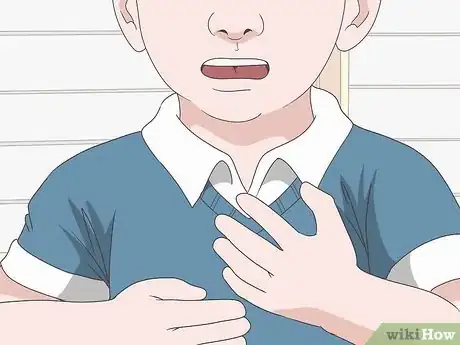
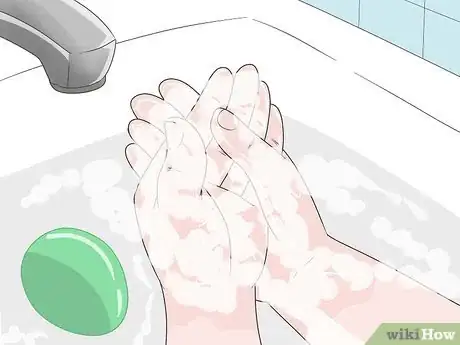
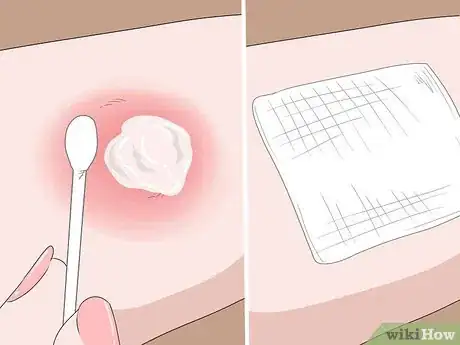

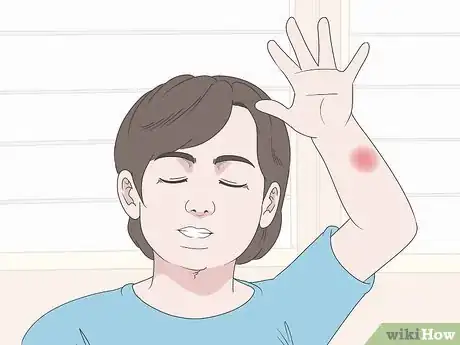
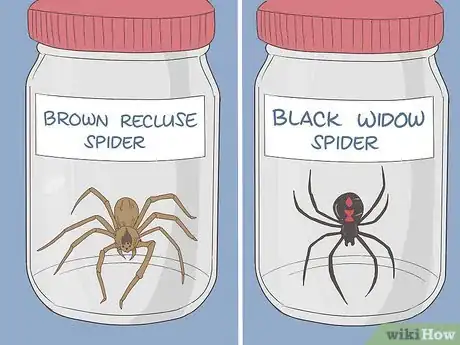
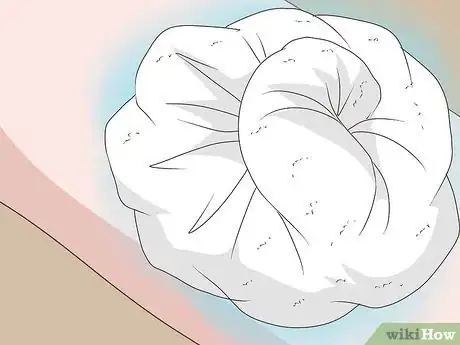
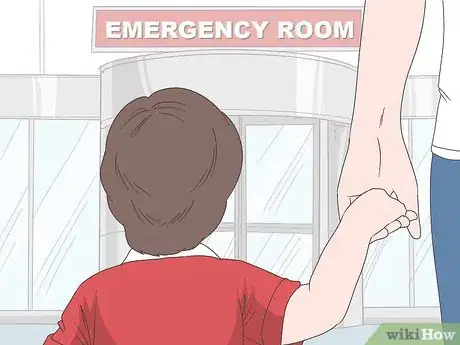
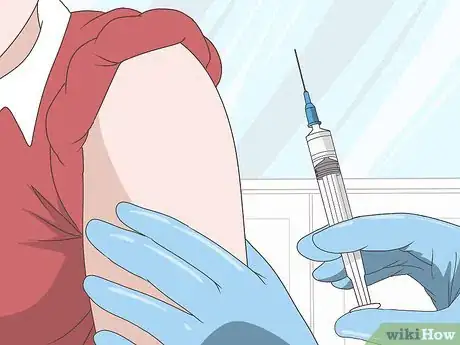

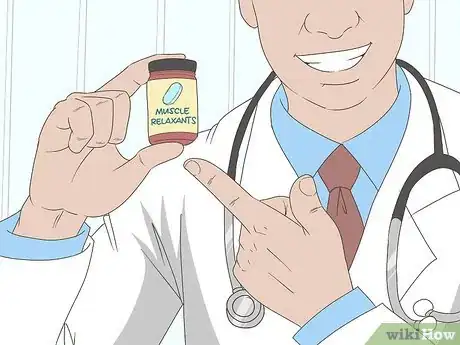
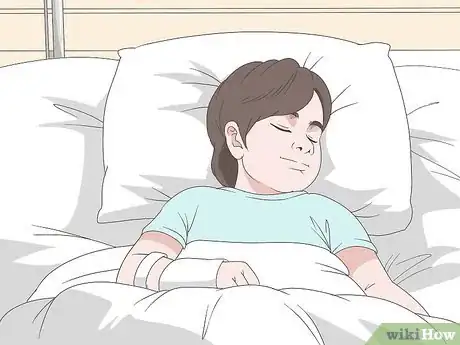



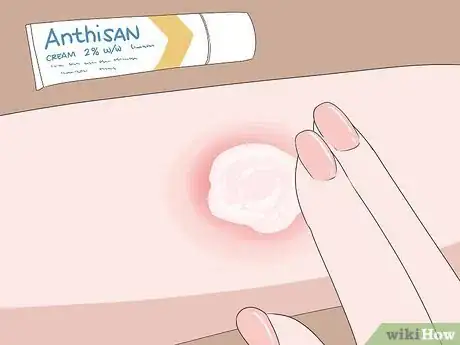
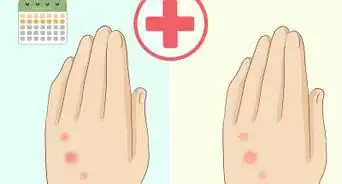

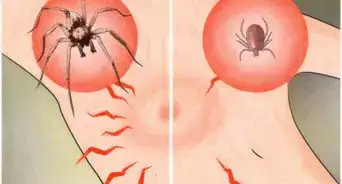
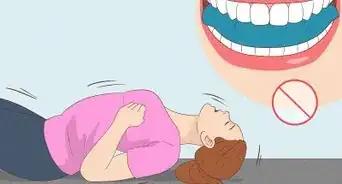


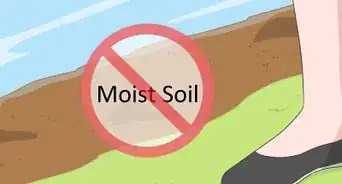

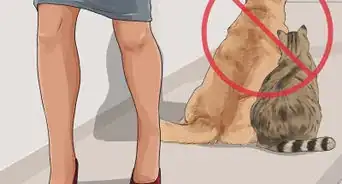
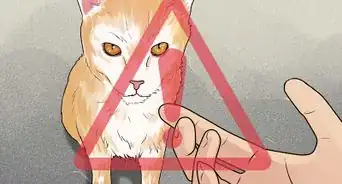
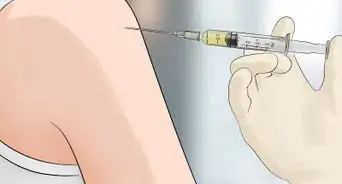

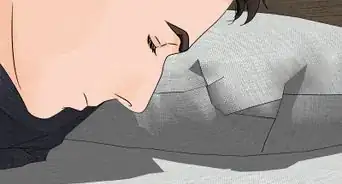
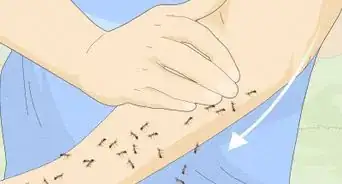









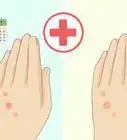
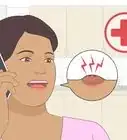
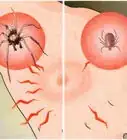




































Medical Disclaimer
The content of this article is not intended to be a substitute for professional medical advice, examination, diagnosis, or treatment. You should always contact your doctor or other qualified healthcare professional before starting, changing, or stopping any kind of health treatment.
Read More...